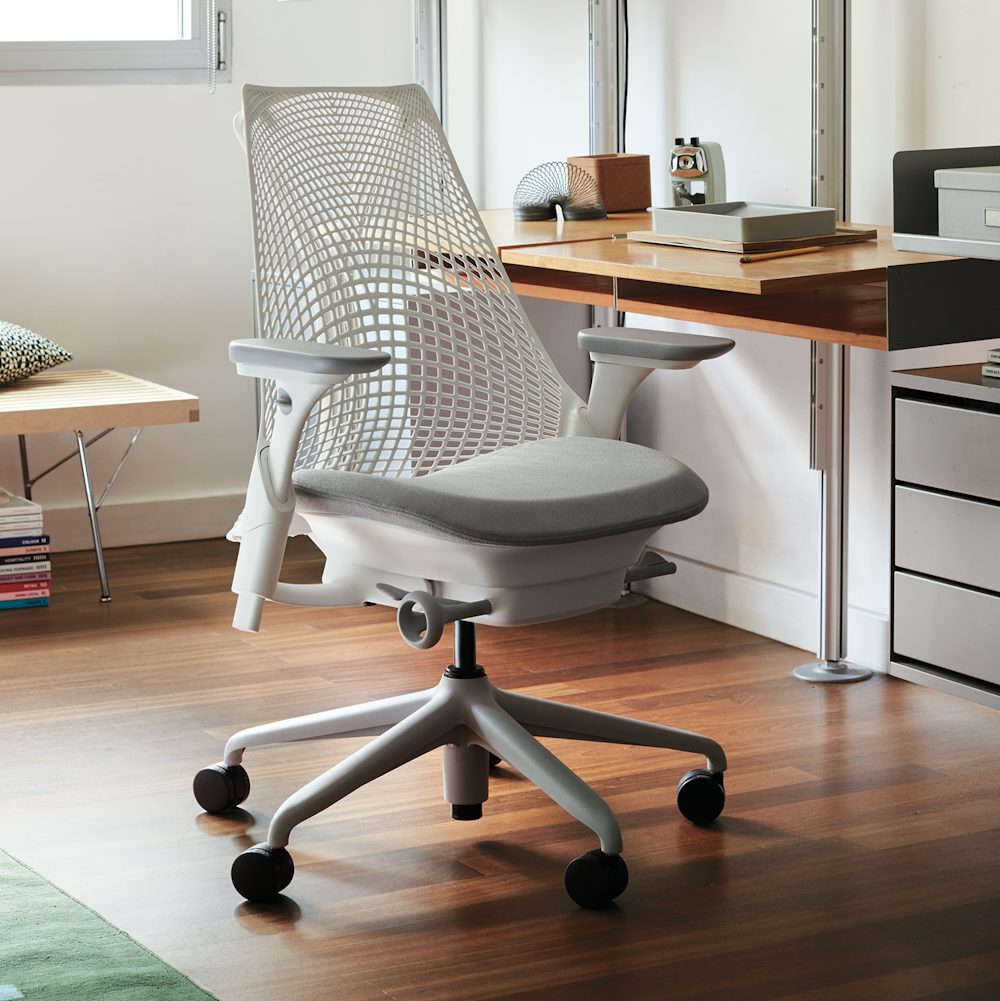“Design brings stories to life,” said Yves Béhar in 1999. Today, that idea is no longer breaking news, but Béhar was one of the first to talk about the narrative content of form and the emotional connection between person and object. In the decade since, he has become one of the heroes of the design world by performing extraordinary feats of design that fuse poetry with technological innovation.
Through fuseproject, the San Francisco-based design and branding firm he founded, Béhar has won international recognition for his work with Herman Miller, Toshiba, Nike, Microsoft and Mini Cooper. But the Swiss-Turkish designer views his role as something more than product development. “I believe design’s purpose is not only to show us the future,” he states, “but to bring us the future.”
As one might expect from a designer whose creations are as compelling as the Jawbone headset for Aliph and the Leaf Light for Herman Miller, Béhar has been featured in countless articles for publications like Metropolis, Architectural Record and Business Week. In conversation, he consistently returns to design’s ethical and expressive aspects, as well as his desire to “use technology as an asset, rather than a constraint.” These themes inform Béhar’s own personal story, which includes a childhood in Switzerland and the bi-cultural influences of a “modernist” East German mother and “poetic” Turkish father, as well as immersion in the dot-com boom of the 1990s.
Following graduation from Art Center College of Design, Béhar worked for two Bay Area design houses, Frog and Lunar, before starting fuseproject. His company was named one of the world’s Top 10 Most Innovative Companies in Design by Fast Company in 2014, and his long list of awards includes the National Design Award from the Cooper-Hewitt National Design Museum, Treehugger’s Best of Green Architecture and Design Award, and several Red Dot Design and IDEA awards.
The designer heads up Industrial Design at California College of the Arts (CCA,) where he encourages students to become involved in all aspects of object making. He also attempts to install a global sensibility and to instill a sense of the designer’s responsibility to culture and our collective future. For Béhar, design is one of the most important tools we have for “departure” and “transformation.”
Through fuseproject, the San Francisco-based design and branding firm he founded, Béhar has won international recognition for his work with Herman Miller, Toshiba, Nike, Microsoft and Mini Cooper. But the Swiss-Turkish designer views his role as something more than product development. “I believe design’s purpose is not only to show us the future,” he states, “but to bring us the future.”
As one might expect from a designer whose creations are as compelling as the Jawbone headset for Aliph and the Leaf Light for Herman Miller, Béhar has been featured in countless articles for publications like Metropolis, Architectural Record and Business Week. In conversation, he consistently returns to design’s ethical and expressive aspects, as well as his desire to “use technology as an asset, rather than a constraint.” These themes inform Béhar’s own personal story, which includes a childhood in Switzerland and the bi-cultural influences of a “modernist” East German mother and “poetic” Turkish father, as well as immersion in the dot-com boom of the 1990s.
Following graduation from Art Center College of Design, Béhar worked for two Bay Area design houses, Frog and Lunar, before starting fuseproject. His company was named one of the world’s Top 10 Most Innovative Companies in Design by Fast Company in 2014, and his long list of awards includes the National Design Award from the Cooper-Hewitt National Design Museum, Treehugger’s Best of Green Architecture and Design Award, and several Red Dot Design and IDEA awards.
The designer heads up Industrial Design at California College of the Arts (CCA,) where he encourages students to become involved in all aspects of object making. He also attempts to install a global sensibility and to instill a sense of the designer’s responsibility to culture and our collective future. For Béhar, design is one of the most important tools we have for “departure” and “transformation.”
3
Results
3
Results
View





